
I thought the recent full-page ad in Bangalore Mirror was the usual one from India’s largest carmaker, Maruti-Suzuki. But it wasn’t – it asked readers if they wanted to ‘subscribe’ to a new Maruti-Suzuki car!
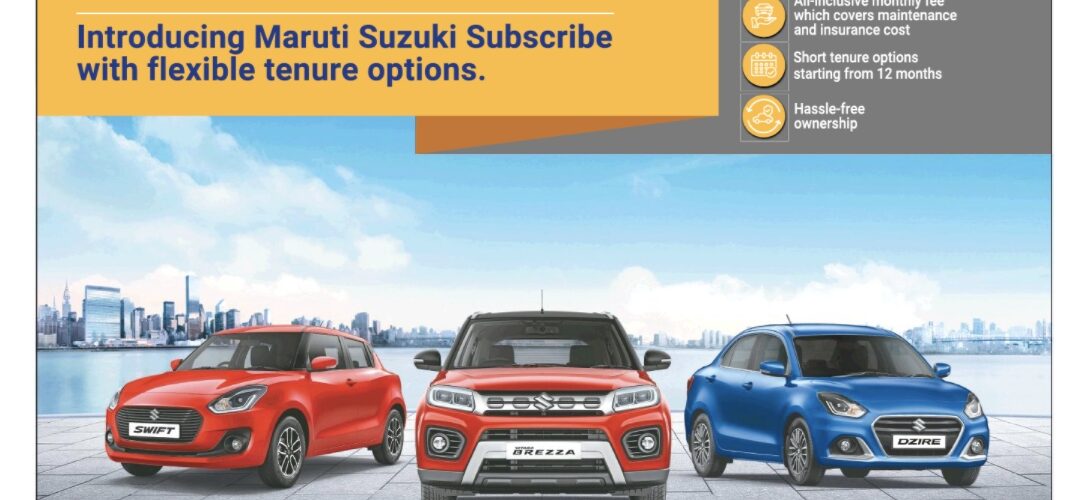
We ‘subscribe’ to a lot of things these days. Back in the 80s and 90s, a ‘subscription’ predominantly meant a newspaper or a magazine that we paid every month for, and it landed at our homes regularly. Then, ‘subscribe’ usually meant something that you sign up for via email.
Subscribe, the word, means, arrange to receive something regularly by paying in advance.
Now, we…
– subscribe to content on OTT (Netflix, Amazon Prime, etc.)
– subscribe to milk, and it is delivered daily, the cost of which is deducted from an online wallet that we top-up regularly, as per need
– subscribe to access a gym
– subscribe to a music streaming service
Usually, in subscriptions, there is no asset transfer. If an asset, large or small, is transferred from the seller to the buyer, then we do not use ‘subscription’ and instead use ‘rent’ or ‘lease’.
So, it is both amusing and unnerving to see the automobile industry use ‘subscription’ as a term for cars that are actually rented or leased by users. But I assume the term is carefully used to appeal to current sensibilities that are obsessed with or comfortable with all-things-subscription.
But therein lies the problem – when we use the word ‘subscription’, we expect a relatively lower/smaller amount of ‘fee’ per month. What is lower/smaller is always relative, but I presume anything above Rs. 10,000 per month could perhaps be better clubbed under rental/lease, in terms of expectation-setting. When car manufacturers use ‘subscribe’ to lure potential users and then show prices that are more in line with rental prices, that amounts to click-bait!
The reason why I bring this nomenclature is because of the price charged by car brands in India for subscription! Here’s a snapshot of the lowest price points at which one can ‘subscribe’ a car:
- Maruti-Suzuki: Swift – Rs. 19,324 (minimum 12 months)
- Hyundai (subscription service outsourced to Revv): Eon – Rs. 14,299 (6 months; the cost goes to Rs. 16,299 for one month)
- Tata Motors (only for electric cars): Nexon EV – Rs. 29,500 (minimum 12 months)
- Toyota: Glanza – Rs. 27,071 (minimum 12 months)
- Mahindra: XUV300 – Rs. 29,430 (minimum 12 months)
- Morris Garages: MG Hector – Rs. 45,873 (minimum 6 months)

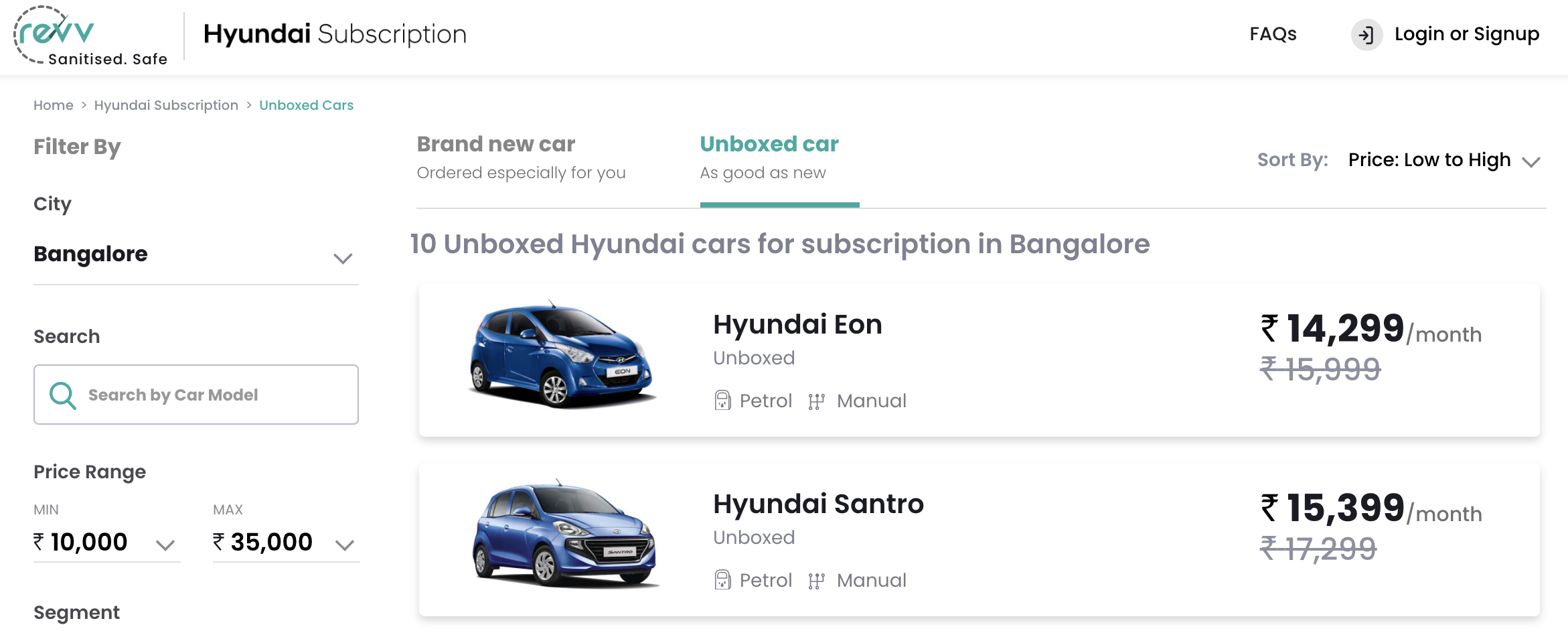
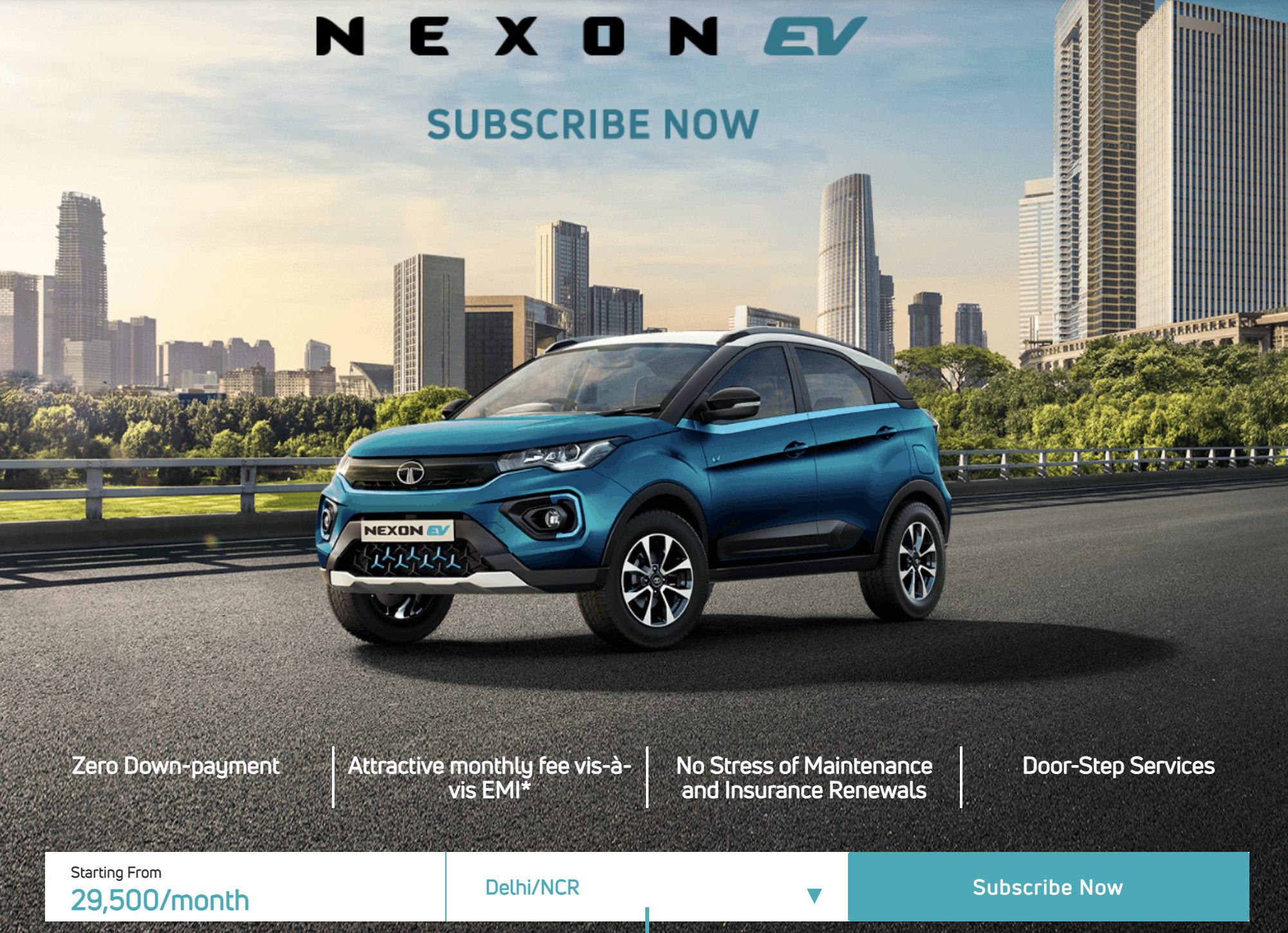
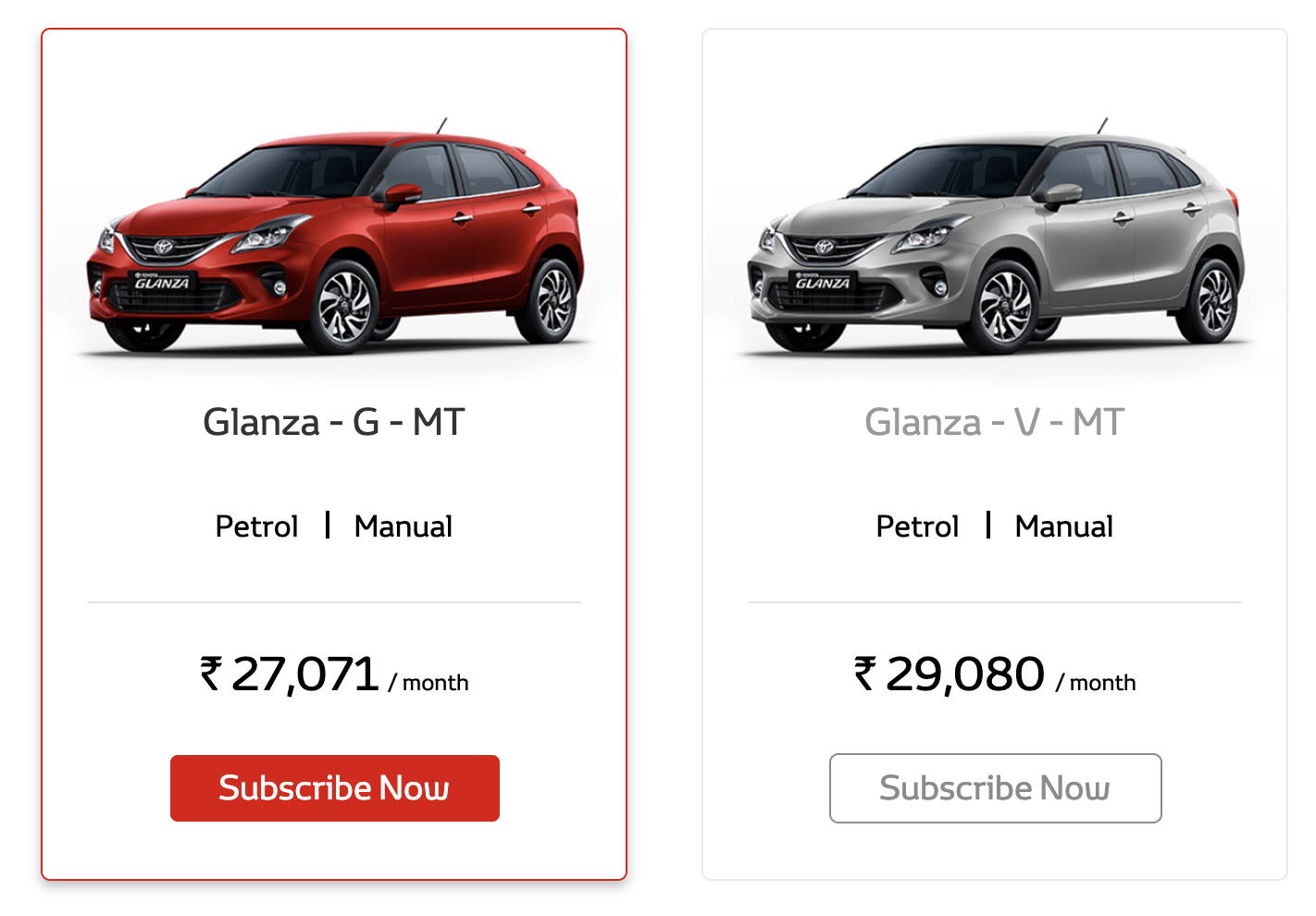
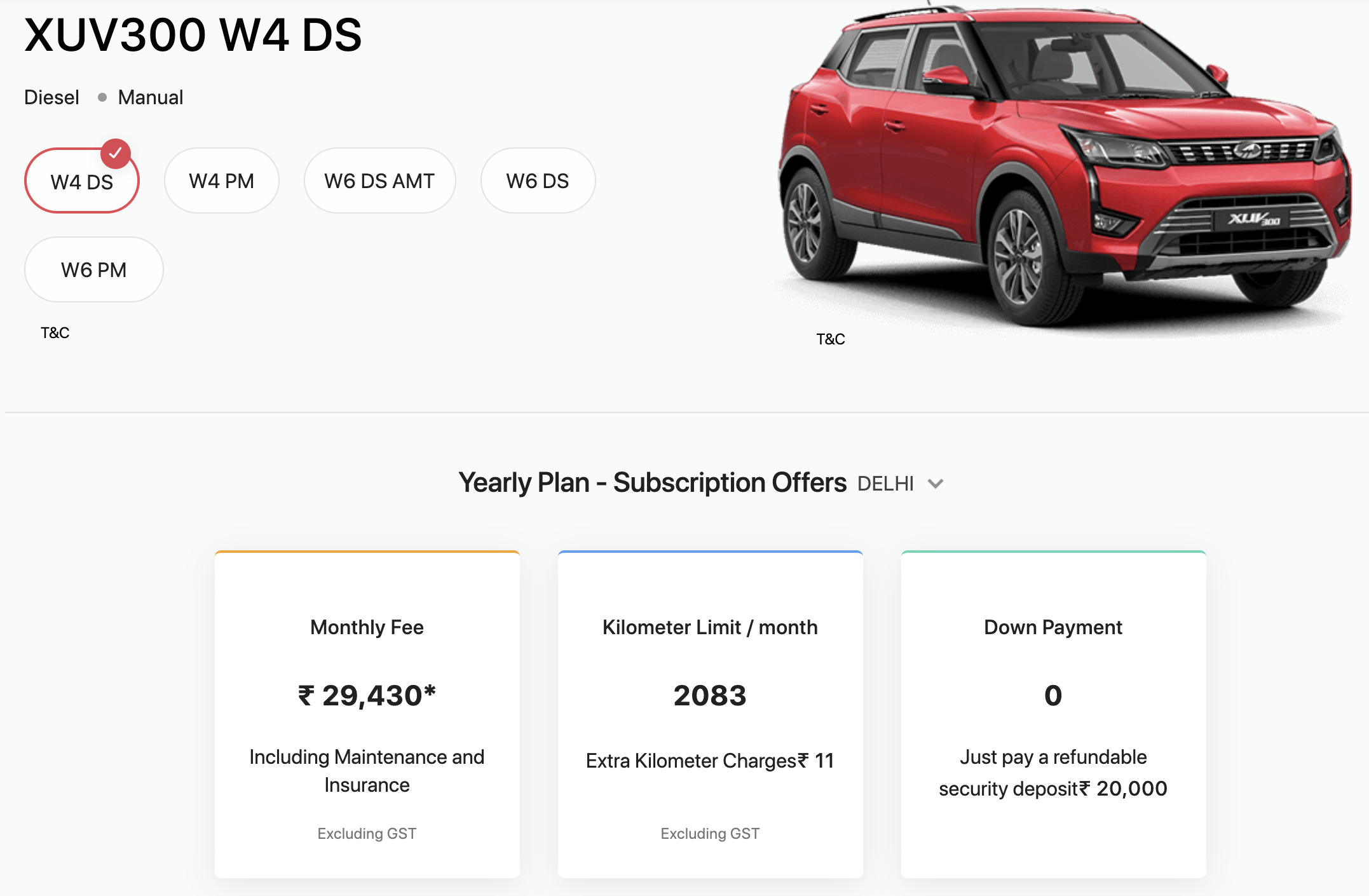
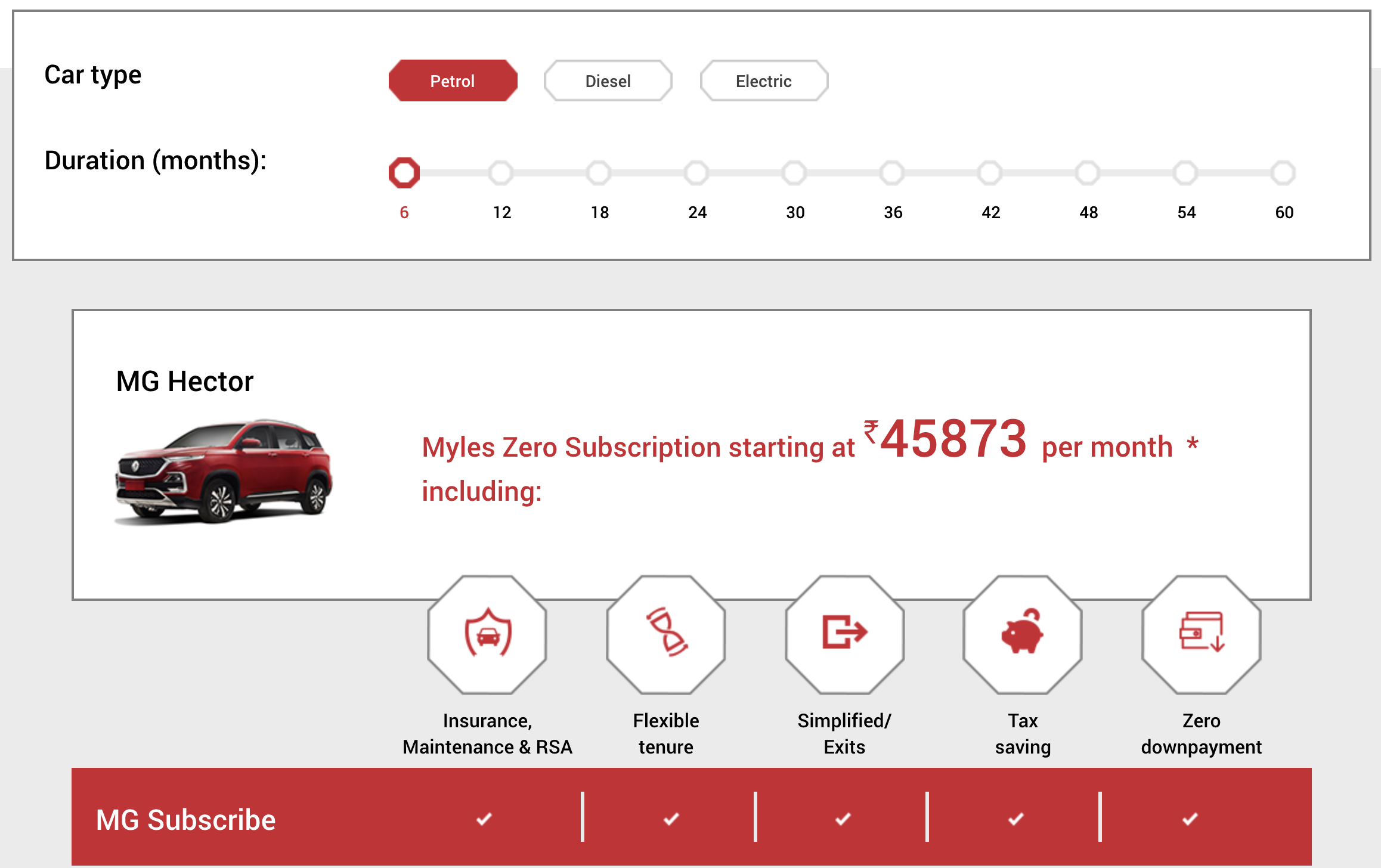
Skoda India seems to have understood this better than others, for example – only in their press release announcing the partnership with Orix (one of the 2 partners of Maruti-Suzuki, for the same service, incidentally) do they use ‘subscription-based payment models’. The service itself is framed as Skoda Clever Lease.
Volkswagen is another example – they call the offer ‘Volkswagen Power Leasing‘.
The price range for most subscription offers for cars in India, whether they are from OEMs or 3rd parties like Revv, are akin to rentals for homes. But we do not use ‘subscribe’ when we rent homes/flats.
The use of ‘subscribe’ is rather linked to
1. the ease of acquiring a vehicle,
2. the lack of being hassled with additional payments that are associated with car ownership
3. lock-in periods that do not bind the user to long-term commitments
But in the case of subscription, or rent or lease, the costs are apportioned and added to the monthly fee because a costly asset is being transferred between a buyer and a seller. And that adds to the price per month, making them seem higher than what one expects for a ‘subscription-based’ service.
The bigger issue is that the monthly ‘subscription’ prices may seem similar to the EMI one needs to pay when they buy a car. Indians have this age-old notion of ‘why pay rent when the same amount could be an EMI in a path towards ownership’ when it comes to homes. Also, unlike homes, which are actually assets, cars are always a liability – the price of a vehicle never goes up, it always goes down.
Though Maruti-Suzuki’s subscription plans announcement is a post-pandemic reaction, Hyundai announced their subscription plans as early as May 2019! The primary motivation to launch subscriptions was always the interest of more consumers/users to move to an asset-light model, spurred by the success of Uber, Ola and other ride-sharing platforms. That created a situation where private equity and VC money ensured that there were enough taxis (which is the simple and honest term for an Uber vehicle, no matter what fancy term we give it) on the road that is always accessible via a smartphone that owning a vehicle hardly made sense anymore.
But the pandemic broke that model irreparably, and we’re back to considering ownership for the sake of safety. So the subscription models help ease ownership without long-term commitments.
For subscription to truly work on a large scale, attract a wide range of users (not ‘buyers’; subscribers are merely users without the intent of owning the asset), the prices need to be a lot lesser/attractive, while the period of a subscription needs to be in line with what ‘subscription’ means for the most popular services like streaming video content or streaming music (usually monthly). That lower period offers flexibility in terms of trials, increases the chances of driving assorted cars – but all that comes after the pricing is sorted.
The unspoken problem in all this asset-light interest in automobiles is the way we Indians drive and care for products that do not belong to us. That’s a far more insidious attitude problem that leads to a breakdown of trust in assets owned by others. That could affect the subscription of pre-owned cars, though OEMs’ offers of brand new cars manage that problem to some extent.
